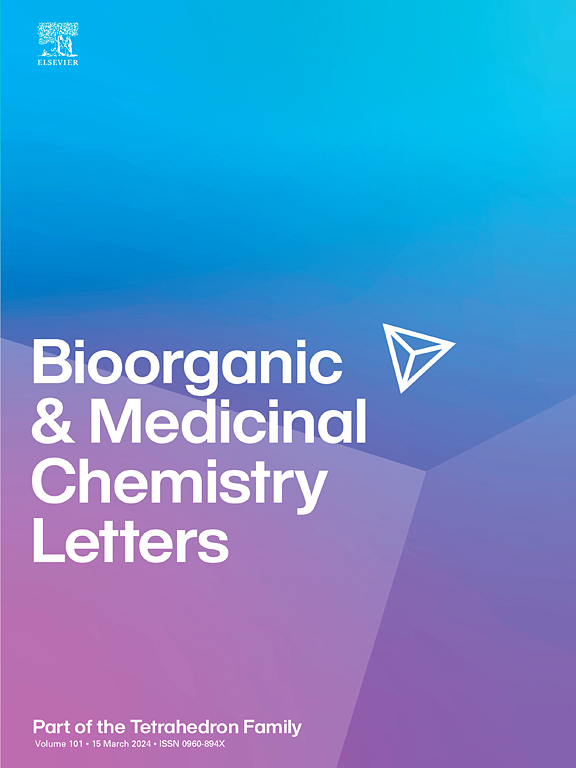非对映异构体天然产物的合成和生物学评价:α-葡萄糖苷酶抑制的新型协同组合的发现
IF 2.2
4区 医学
Q3 CHEMISTRY, MEDICINAL
引用次数: 0
摘要
Cabraleahydroxylactone (1a)和3-epi-cabraleahydroxylactone (1b)是天然的非对映体,发现于Aglaia缩写中,以其生物潜力而闻名。虽然已合成并研究了1b作为抗糖尿病药物,但1a的活性仍未被探索。本研究通过还原cabralealactone(2)成功地增强了反应混合物中的1a,将其比例从痕量水平提高到9.5:1 (1b:1a)。分子对接显示,这些非对映体与α-葡萄糖苷酶变构位点存在明显的结合作用,提示存在药物协同作用机制。动力学研究证实了这两种化合物的非竞争性抑制作用,其中1a表现出更好的结合亲和力(低Ki)。α-葡萄糖苷酶的协同抑制作用在特定的1b:1a比例(9:1,8:2,2:8和1:9)下被观察到。此外,与单个化合物相比,这些组合显示出较低的溶血毒性。这些发现强调了1b:1a非对映异构体组合作为抗糖尿病药物开发的一个有希望的先导,通过协同相互作用提供增强的疗效和安全性。本文章由计算机程序翻译,如有差异,请以英文原文为准。

Synthesis and biological evaluation of diastereomeric natural products: Discovery of a novel synergistic combination for α-glucosidase inhibition
Cabraleahydroxylactone (1a) and 3-epi-cabraleahydroxylactone (1b) are naturally diastereomers found in Aglaia abbreviata, known for their biological potential. While 1b has been synthesized and studied as an anti-diabetic agent, the activity of 1a remained unexplored. This study successfully enhanced 1a in the reaction mixture through the reduction of cabralealactone (2), increasing its ratio from trace levels to 9.5:1 (1b:1a). Molecular docking revealed distinct binding interactions of these diastereomers with α-glucosidase allosteric sites, suggesting a drug synergy mechanism. Kinetic studies confirmed non-competitive inhibition by both compounds, with 1a exhibiting superior binding affinity (lower Ki). Synergistic α-glucosidase inhibition was observed in specific 1b:1a ratios (9:1, 8:2, 2:8, and 1:9). Furthermore, these combinations displayed reduced hemolytic toxicity compared to individual compounds. The findings highlight the 1b:1a diastereomeric combination as a promising lead for anti-diabetic drug development, offering enhanced efficacy and safety through synergistic interactions.
求助全文
通过发布文献求助,成功后即可免费获取论文全文。
去求助
来源期刊
CiteScore
5.70
自引率
3.70%
发文量
463
审稿时长
27 days
期刊介绍:
Bioorganic & Medicinal Chemistry Letters presents preliminary experimental or theoretical research results of outstanding significance and timeliness on all aspects of science at the interface of chemistry and biology and on major advances in drug design and development. The journal publishes articles in the form of communications reporting experimental or theoretical results of special interest, and strives to provide maximum dissemination to a large, international audience.

 求助内容:
求助内容: 应助结果提醒方式:
应助结果提醒方式:


